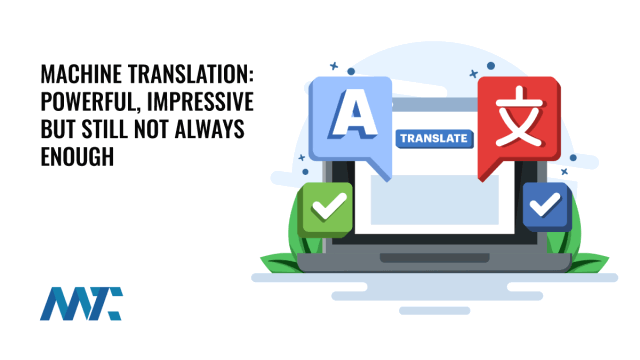A decade ago, machine translation was, at best, a novelty. Website plugins proudly offered instant translation, but the results were often laughable. A simple test—translating a paragraph from English to another language and back again—highlighted just how much meaning, tone, and structure got lost in transit. The words came back rearranged, hollow, or downright confusing.
That was because translation engines at the time operated on word substitution more than language understanding. They lacked context. They couldn’t determine whether a phrase was casual or formal, regional or universal, literal or metaphorical. They didn’t know when a word meant something completely different depending on geography, industry, or even the speaker’s intent.
Today, the picture is radically different.
Large Language Models
Modern machine translation, powered by large language models (LLMs) and neural networks, has made enormous strides. Tools and models can now produce translations that are grammatically sound, semantically rich, and in many cases, indistinguishable from fluent human output—when used correctly.
The operative phrase there is when used correctly.
These tools aren’t just translating words; they’re interpreting meaning. They analyze entire paragraphs for coherence, take tone into account, and even adjust phrasing based on audience. Many systems allow input on formality, regional variation, and subject matter—meaning you can produce different translations for a medical report in Quebec, a marketing slogan in Madrid, or a social post for Buenos Aires.
But here’s where organizations often misstep: assuming that this sophistication is automatic. It’s not.
Machine translation engines are only as effective as the guidance they receive. Without clear context—such as the intended dialect, target audience, or cultural nuances—they fall back on generic, safe translations. These are readable, but they can miss the mark emotionally, professionally, or culturally. Worse, they can produce results that sound awkward, tone-deaf, or even offensive in certain settings.
For example, in marketing, a culturally unaware translation can strip away the emotion that made the original message compelling. In law or healthcare, even a slightly off interpretation can lead to serious miscommunication. And in culturally rich or idiomatic languages—such as Arabic, Japanese, or Indigenous dialects—machine translation can struggle mightily to preserve meaning, formality, and metaphor.
So, while AI-powered translation tools are extraordinary productivity multipliers—and in many cases, absolutely appropriate for high-volume, low-risk content—they are not a universal solution. And they should not replace thoughtful language localization where stakes are high.
An Emberassing Translation Example
I had my own machine translation failure that’s a textbook example of why AI-driven translation can still produce results that are not only incorrect, but embarrassing or even laughable when left unchecked. Here’s what happened:
My Headline
What Is A Statement Of Work (SOW)? How To Write A SOW… Including Sections
This is a standard business headline. In this context:
Statement of Work (SOW) is a formal document in project management.
The acronym SOW is repeated in the second clause to maintain clarity.
My Italian Machine Translation:
Che cos’è una dichiarazione di lavoro (SOW)? Come scrivere una scrofa… comprese le sezioni
scrofa is the Italian word for a female pig—not an acronym, not a business term.
The machine translator mistakenly interpreted SOW as the verb to sow, leading to a false assumption that the phrase might refer to an animal (sow vs. piglet) or agricultural term.
As a result, the AI grabbed a dictionary definition of sow and replaced it with scrofa, believing it was contextually relevant.
This mistranslation doesn’t just create confusion—it’s actively offensive in a business context, especially in industries or regions where professional tone is critical. Thankfully, a reader from Italy let me know and I was able to update my translation platform, gTranslate. It’s now:
Che cos’è una dichiarazione di lavoro (SOW)? Come scrivere una antiproiettile… comprese le sezioni
Now the word antiproiettile means bulletproof, completely unrelated to a Statement of Work.
When to Rely on Human Translation
Use machine translation for speed and accessibility, but know when the risks outweigh the rewards. Here are key scenarios where human expertise remains critical:
Culturally Sensitive Messaging: Campaigns involving humor, idioms, or emotional appeals—especially for international marketing or public relations—require human insight to land appropriately.
Region- or Dialect-Specific Content: Variants like Canadian French, Swiss German, Brazilian Portuguese, or Mexican Spanish can differ significantly from their European counterparts. Machine translation may default to standard forms and overlook regional nuance.
Industries With Regulatory or Technical Precision: Legal contracts, medical documentation, pharmaceutical labeling, and financial disclosures demand absolute clarity and may carry legal consequences for mistranslation.
Customer-Facing Content That Shapes Brand Perception: Support documentation, UX text, product packaging, and user interfaces benefit from human review to ensure tone, clarity, and alignment with brand voice.
Endangered or Less-Represented Languages: Many languages and dialects are not fully supported or trained in AI models. Translation here often requires native speakers to preserve authenticity and accuracy.
Formal Government or Diplomatic Communication: Official statements, legal agreements, and cross-border correspondence must respect both linguistic protocol and cultural interpretation.
Machine translation has evolved from a crude convenience into a sophisticated tool. It’s fast, affordable, and—when paired with the right context—surprisingly accurate. But it’s not infallible.
Think of it not as a replacement for human translation, but as an assistant. When your message must resonate across cultures, industries, or legal frameworks, there’s no substitute for a human who understands not just the words, but the world behind them.
Use AI to open the conversation. Use HITL to ensure it’s heard the right way.
©2025 DK New Media, LLC, All rights reserved | Disclosure
Originally Published on Martech Zone: Machine Translation in 2025: Powerful, Impressive But Still Not Always Enough

